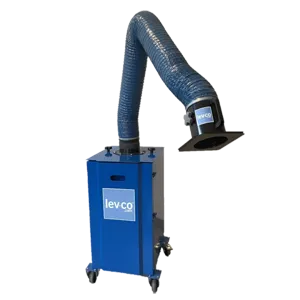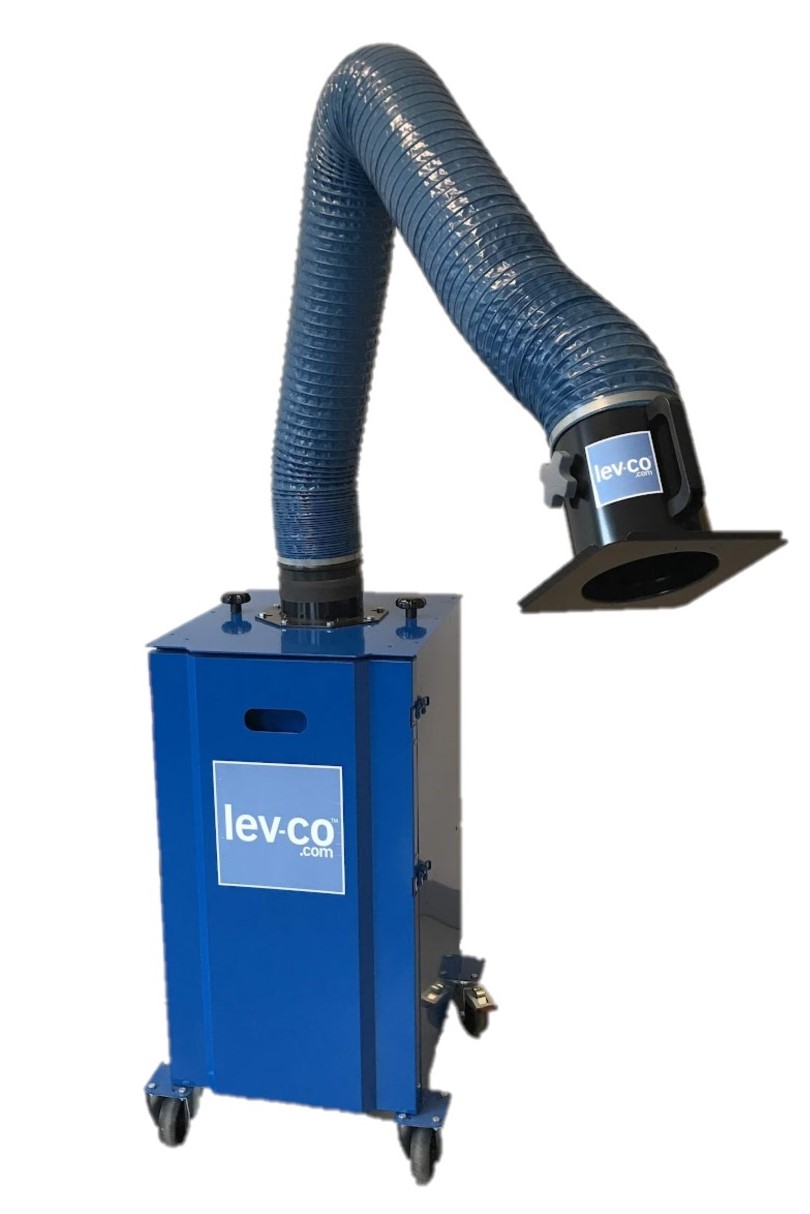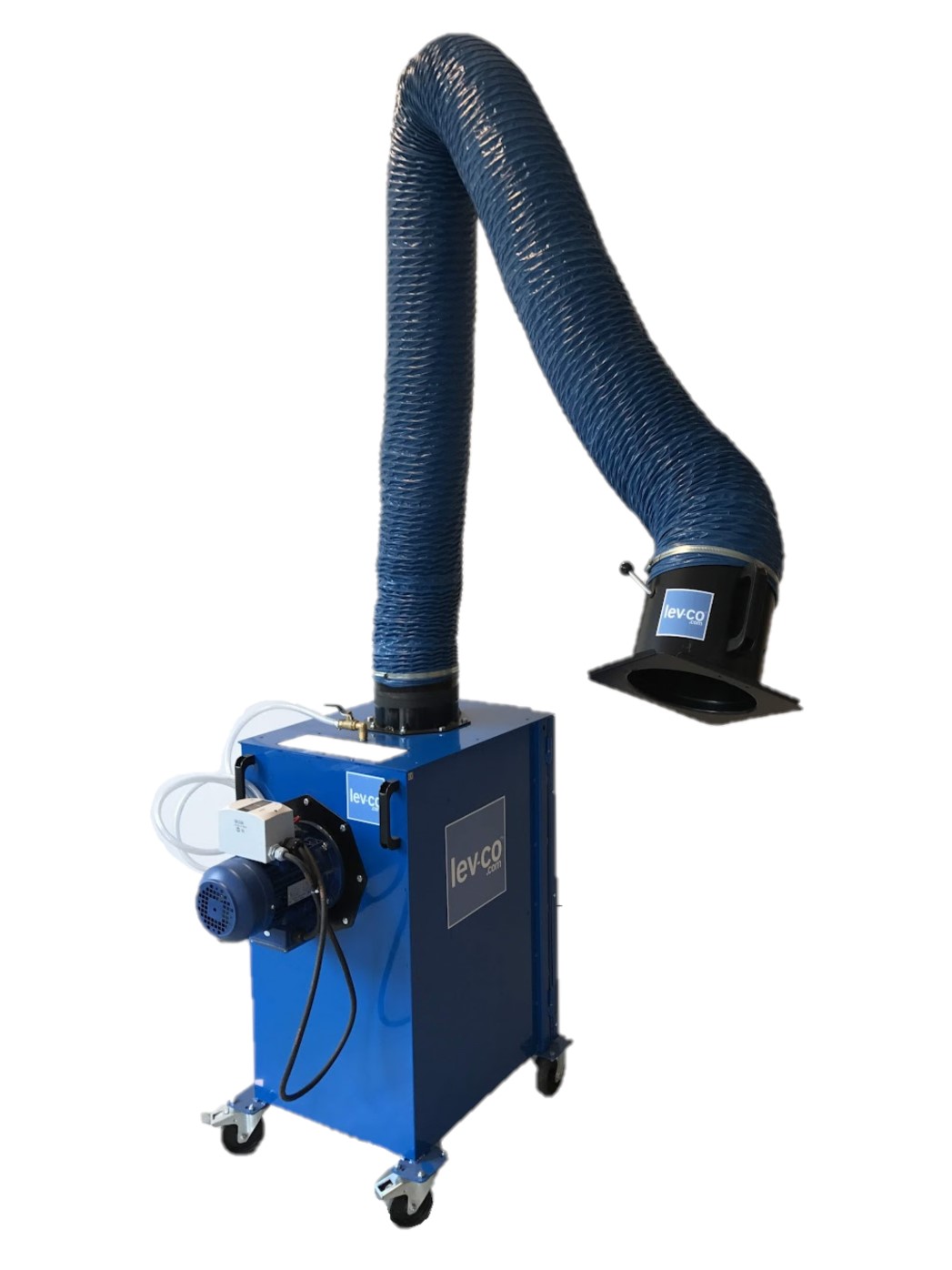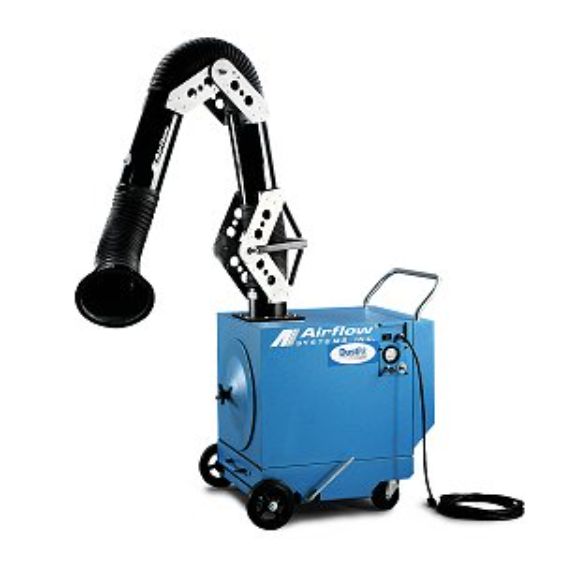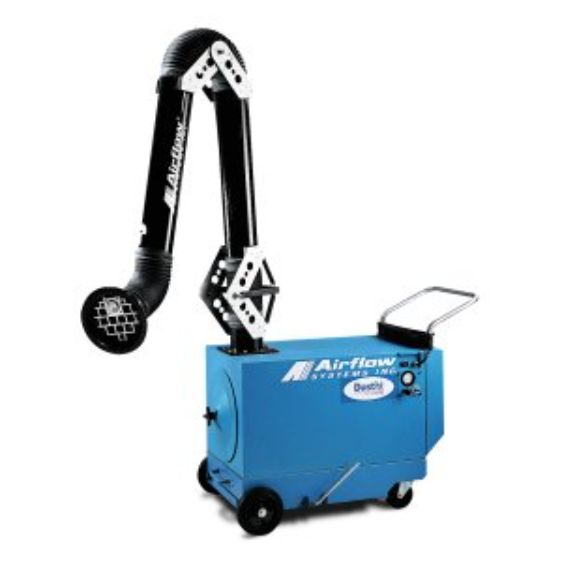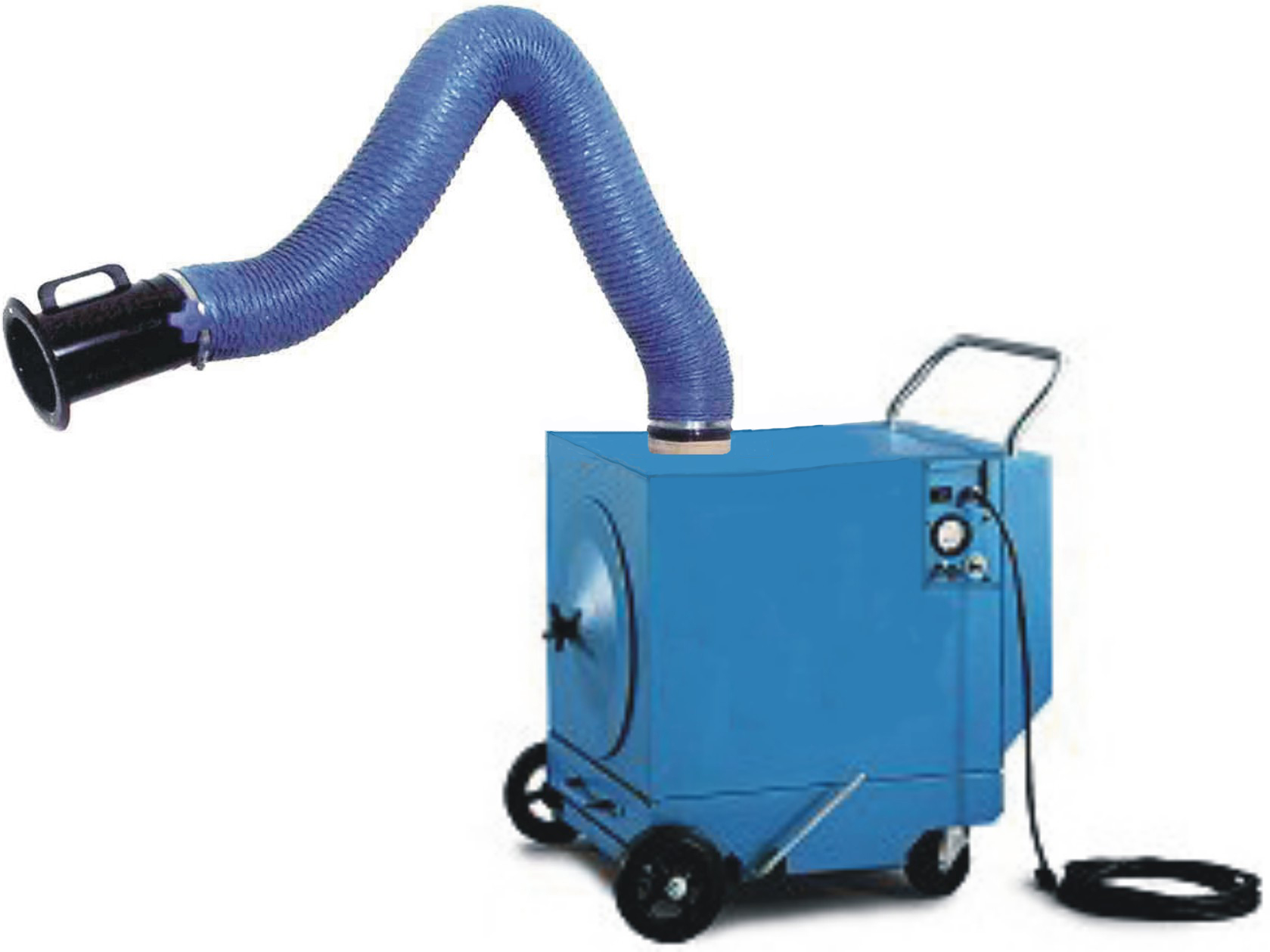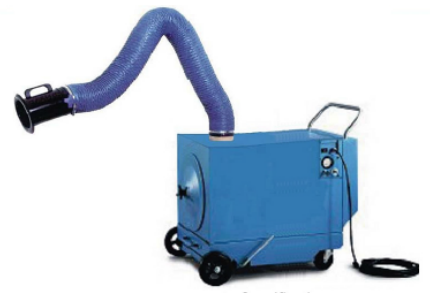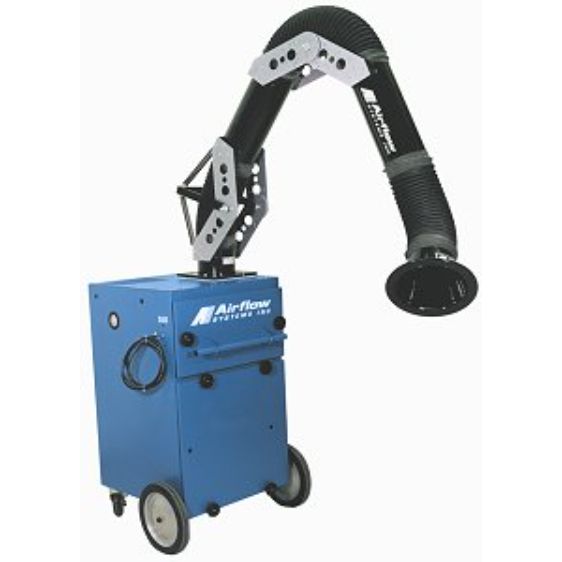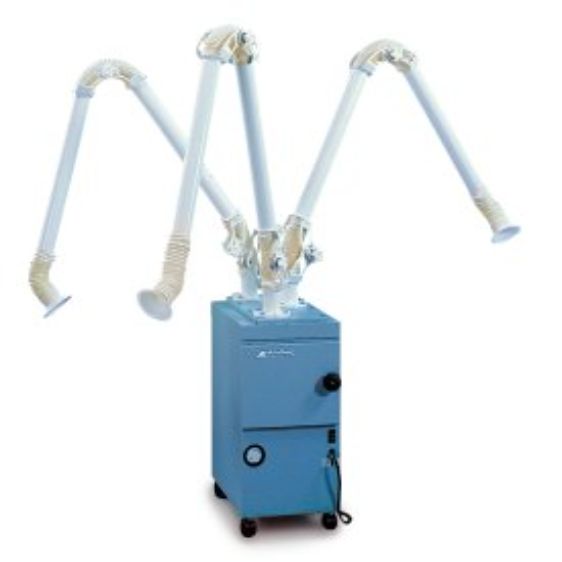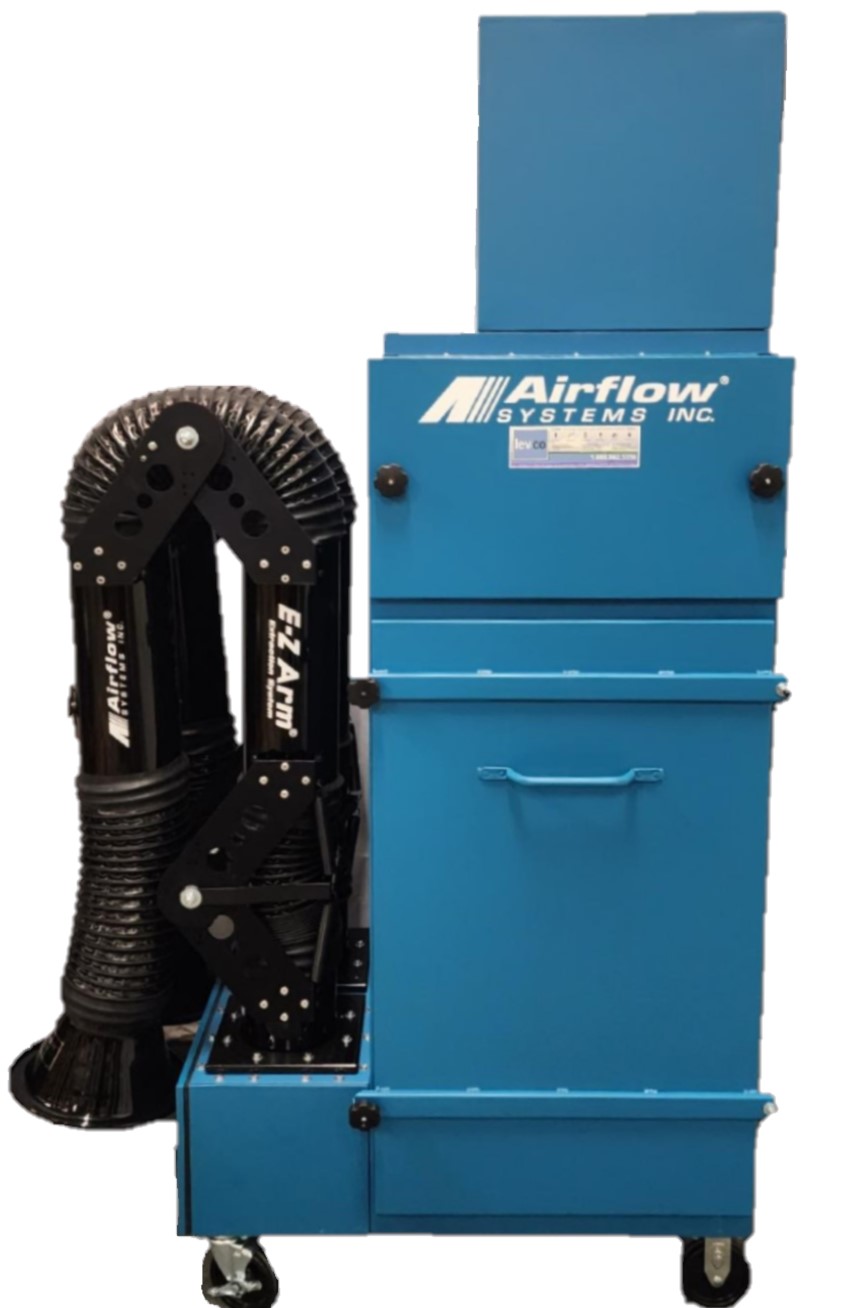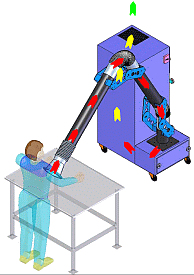
Portable Filter Units
Much like an extraction arm, which allows for capture-at-source fume extraction, and easy maneuverability, the Portable Filter Unit is one step up. Point source capture can be achieved anywhere you can roll the filter unit, rather than being confined to the reach of a fixed system. Quite often, “Clean Air” solutions are required throughout a workplace. These units can be easily moved from location to location with ease while capturing dust and fumes where needed.
Various Options in Filtering Systems Available:
- Washable Filters
- Cleanable Filters
- Self-Cleaning Systems
- Throw Away Filters
Portable filter units are perfect for situations where an integrated HVAC system is not an option, such as cell-based manufacturing, where workstations are being set up and torn down daily. Here is a full list:
- Aerospace - Deburring
- Aerospace - Painting and Marking
- Aerospace - Steel Welding
- Aerospace - Surface Grinders
- Art's - Jewelry Manufacturing
- Auto body repair - Buffing and Polishing
- Auto body repair - Deburring
- Auto body repair - Painting and Marking
- Auto body repair - Steel Welding
- Auto body repair - Torch Cutting Ventilation
- Bio & Pharma - Pill Productions
- Bio & Pharma - Prosthetics & Orthotics
- Bio & Pharma - Tablet Press Machine
- Chemicals and Plastics - Pesticide Manufacturing
- Chemicals and Plastics - Plastic Manufacturing
- Construction - Mortar/Plaster Mixer
- Construction - Paint Spray Gun
- Dental Offices - Operating Room
- Dental Offices - Procedure Room
- Educational - Auto Shop
- Educational - Machine Shop
- Educational - Welding Shop
- Educational - Wood Shop
- Electronics - Electronics Assembly Line
- Farm & Heavy Equipment - Farm Equipment Repair
- Farm & Heavy Equipment - Heavy Equipment Repair
- Farm & Heavy Equipment - Steel Welding
- Food & Beverage - Animal Food Manufacturing
- Food & Beverage - Food Packaging Plant
- Forensics - Forensic Laboratories
- Machine Shop - Abrasive Cut-Off Saw
- Machine Shop - Circular Automatic Buffing
- Machine Shop - Core Grinding
- Machine Shop - Manual Buffing and Polishing
- Machine Shop - Metal Polishing Belt
- Machine Shop - Metal Spinning
- Machine Shop - Portable Chipping and Grinding Table
- Machine Shop - Steel Welding
- Machine Shop - Straight Line Automatic Buffing
- Machine Shop - Surface Grinders
- Machine Shop - Vertical Spindle Disc Grinder
- Marine - Hull Building
- Marine - Pump Room Cleaning
- Marine - Tank Stripping
- Metalworking - Steel Welding
- Mining & Quarrying - Drilling
- Mining & Quarrying - Equipment Cleaning
- Mining & Quarrying - Lead Smelting
- Misc. Operations - Soldering
- MRO - Heavy Equipment Repair
- MRO - Painting and Marking
- MRO - Steel Welding
- MRO - Torch Cutting Ventilation
- Municipal & DOT Garage - Steel Welding
- Museums & Artifacts - Artifact Cleaning
- Museums & Artifacts - Paleontology
- National Defense - Military Vehicle Repair
- National Defense - Steel Welding
- Painting - Small Paint Booth
- Process Engineering - Rubber Calender Rolls
- Public Transportation - Subway Maintenance and Repair
- Refineries & Energy - Petroleum Refining
- Vehicle Repair - Buffing and Polishing
- Welding Shops - Copper Alloy Welding
- Welding Shops - Magnesium Welding
- Welding Shops - Nickel Welding
- Welding Shops - Stainless Welding
- Welding Shops - Steel Welding
- Welding Shops - Torch Cutting Ventilation
- Woodworking - Band Saw
- Woodworking - Chainsaw
- Woodworking - Circular Saw
Yes, but only when systems are configured, installed, and maintained for the correct use application. The filter selection is paramount to ensuring the reliability, effectiveness, and safety of the unit you use.
Unlike dilution ventilation, Portable Air Filer Units can return significant energy savings and improvements in health and safety. However, the precision at which they must be designed, installed, and used can be complex. Lev-co uses three procedures to determine the design and installation of our products. These three procedures are OSHA HOC (hierarchy of controls), MOC (management of change), and PSR (pre-start safety review). Lev-Co recommends that these three procedures, when appropriate, should be used when selecting Portable Air Filter Units as a capture method.
Here are links to examples of these three procedures:
OSHA Hierarchy of controls
MOC Management of change sample document
PSR Pre-start Health and Safety review
Portable air filter units are very broad in applications. Some applications include metal shops, industrial manufacturing facilities, auto shops, paint booths, and electrical repair facilities. For a full list of applicable industries, refer to our Industry Solution Page
You can find a full selection by viewing our catalog below. All units come equipped with fan/motor assemblies to ensure adequate extraction at all times.
Some important points to consider when purchasing:
- Capacity: How much flow will the extraction arm handle?
- Capture Velocity: Can the extraction accommodate the required capture velocity to capture the aerosol?
- Easy to Use: How many articulations/joints does the extraction arm have?
- Stay in Place: Does the extraction stay in place, how often do the joints need to be tightened?
- Extension Hoods: Do you need a large diameter extension hood?
- e.g. 36"Ø? (Optional)
- Can the extraction arm withstand the pressure/abrasion/corrosion/etc.?
- Can the filter withstand the pressure/abrasion/corrosion/etc.?
Pro's:
- Remove airborne toxins at source before they enter any worker's breathing zone
- Some extraction arms allow the supporting of items like wire feeders, compressed air cord reels, and electrical cord reels for increased productivity
- Better visibility through the addition of hood-mounted lighting solutions
- Optimized hoods, large-diameter receiving hoods, and hose extensions are effective solutions where capture or hood placement is difficult
- Hood can be rotated 90° (perpendicular to the floor), eliminating shadowing
- When used correctly, the operator can visually see the contaminant being safely drawn away from the process
- With the use of castors, the arm can reach far for precise fume extraction
Con's:
- Operator needs to be comfortable with the use of the arm to ensure adequate capture
- Arms not always available in larger diameters for required capture velocity
- System not effective unless configured correctly
Industrial workers are exposed to many health hazards daily. As a result, these workers risk the possibility becoming sick, ill, and in some cases, permanently disabled. According to a WHO estimate (WHO, 2000), unintentional poisonings led to 300,000 deaths in the year 2000.
We aim to diminish that figure, but this is only possible if the correct equipment is used, and configured correctly. Our team at Lev-Co works to make the logistics of those questions as straightforward as possible, and as such, will work to provide you with the best extraction system that fits your worker's needs. This includes everything from accessibility and usability to longevity and reliability.
You can read more about the risks and preventions of fume extraction below:
OSHA
WHO
The integral flaw with dilution ventilation is the contaminants picked up by the system are not ultimately removed from the air. As a result, dilution ventilation is ineffective against most contaminants produced in industrial processes, such as metal fumes, abrasive dust, vapors, gases, and toxic chemicals. Local exhaust ventilation eliminates these issues through the capture of contaminants near or at the source of the contaminant, not allowing the contaminant to enter the atmosphere.
To read up more about the benefits of local exhaust ventilation versus dilution ventilation, refer to these links:
CCOHS
Use of Local Exhaust and Dilution Ventilation
Filtration:
Filter maintenance is paramount to the healthy operation of both your workers and the fume extraction system. We offer a wide range of filter options for multiple applications. Some of these filters are washable, and as a result, reduce maintenance costs to close to zero. However, depending on shop service hours and specific contaminants, filter replacement may be required.
Electric Motor:
With the use of direct-drive motors, there are no wear items such as pulleys or belts. As a result, the risk of failure is highly unlikely, regardless of maintenance intervals.
Construction: All of our portable filter units are built with steel and are welded together for the best consistent performance, and the least leakage. As such, there is virtually nothing about the construction and function of the system that needs maintaining. The use of heavy duty ball-bearing castors ensures years of reliability on the shop floor.
Do's:
- Periodic maintenance checks
Don'ts:
- Don't obstruct the airflow
- Don't run the unit while not in use
All of our portable filter units come with built in castors for easy maneuverability and portability. There are multiple configurations of extraction arms and filters available for contaminant-specific applications.

